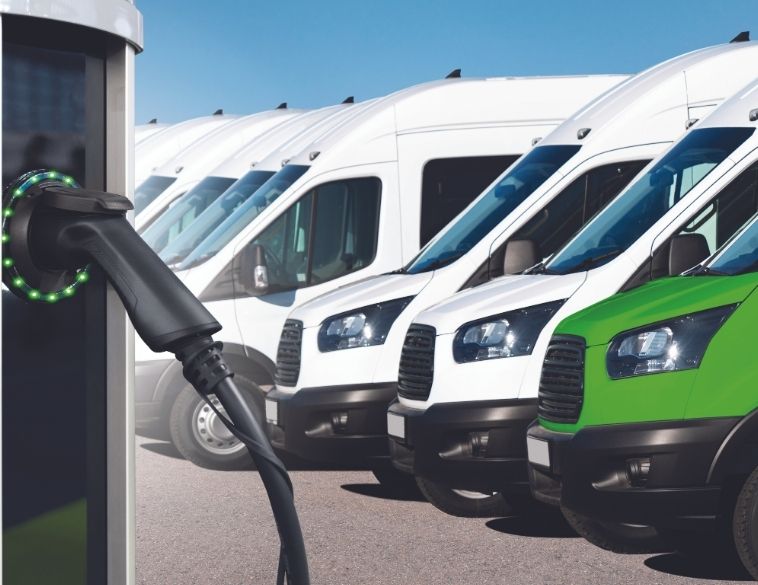More buses, more service improvements are the key.
With post-pandemic ridership up 120 percent, Transit Windsor is definitely on the right track with its transit strategy.
“The pandemic years were terrible for any transit industry,” explains Tyson Cragg, Executive Director, Transit Windsor. “Our ridership has recovered and then some. The latest statistic that I’ve heard is that transit ridership in Canada has recovered to 78 percent of pre-pandemic ridership.

Windsor is less of a commuter town than it is a university and college town, and the majority of riders, about 70 percent, are students. Cragg partially credits the influx of international students at the city’s educational institutes—the University of Windsor and St. Clair College—with the increase in ridership. Students also have transit passes built into their tuition fees, which has been a very successful program.
It’s also a city in growth mode, experiencing an economic boom thanks to major projects such as the NextStar battery plant, the Gordie Howe International Bridge and a new acute care mega-hospital under development. “Windsor Essex is attracting a lot of people,” notes Cragg.
Double-edged sword
But the increase in ridership is a double-edged sword. “It’s great to have high ridership but it comes with a downside,” says Cragg. “Sometimes there are too many for us to accommodate with the existing fleet and schedule resources that we have.”
Currently there are 119 buses in the Transit Windsor fleet. In 2020, 19 buses were purchased, another 24 in 2022, and three are on order. Cragg aims to have 46 more buses by the end of the year, replacing 34 buses on top of that.
The design life of a bus is targeted at 12 years, and heavy duty transit buses go through the Altoona testing at Penn State University, through their engineering department, the Bus Research and Testing Centre. “If you’re building a heavy duty transit bus, if you want to have any credibility in the industry, the bus has to pass the Altoona testing.”

Altoona puts vehicles through durability and longevity testing. “It’s going to take 12 years of being pounded over potholes and heavy duty high duty cycles,” reports Cragg. “The duty cycle of a transit bus is about the most punishing duty cycle you can get. Our buses run 21 hours a day, from 5 am to 2 am, and they’re expected to do that day in and day out.”
Service improvements
Service improvements have been made even through the pandemic. A transit master plan for Windsor was approved in early 2020, and that’s being used to plan more service improvements over the next decade. In fact, service levels have gone up about 12 percent over the last couple of years—items like new routes, increased service hours. Three new routes have been introduced in the last two years alone, tailored to the commuter needs of students, the primary Transit Windsor riders.
An application has been made through Canada Infrastructure Program that included a request for hybrid buses. From a facility perspective, the city is not yet ready for an all electric fleet, as that would require very extensive modification. “Right now we’re focusing on hybrid as a bridge technology to get us to full electrification.”
Older diesel buses are being replaced with hybrid technology, and hybrid buses have been part of the fleet since 15 years ago. However, these have been outmoded by new hybrid technology that promises a 30 percent reduction in fuel consumption compared to regular diesel buses.
The new hybrids also have the ability to operate in an “engine-off” mode. Inside, there’s a small diesel engine which is a 6.7 Cummins, the same engine that is in a RAM 2500 full size pickup truck. It’s smaller than the normal engine on a bus, which is usually a Cummins ISL or an L9. “It acts as a gen-set, and the bus operates as an electric vehicle, since the engine only fires up when it needs to recharge the batteries,” explains Cragg.
Hybrid vehicles
Right now hybrid vehicles amount to 25 percent of the fleet, but these will be replaced with the newer generation hybrid. “We really don’t want to buy any more diesel buses if we can avoid it, we want to buy more environmentally friendly equipment,” notes Cragg.
Mechanics have already been trained on hybrids and are well versed in working with high voltage applications. Drivers are trained on the various types of buses, since the hybrids operate a little differently, using regenerative braking.
Cragg is quick to credit staff with helping drive the increase in ridership. “Whether you’re wrenching a bus or driving a bus or selling passes, it’s those folks that have kept us going,” he says. “They’re out there, where the rubber meets the road. It’s a team effort.”






 MONTRÉAL
MONTRÉAL Full time
Full time


